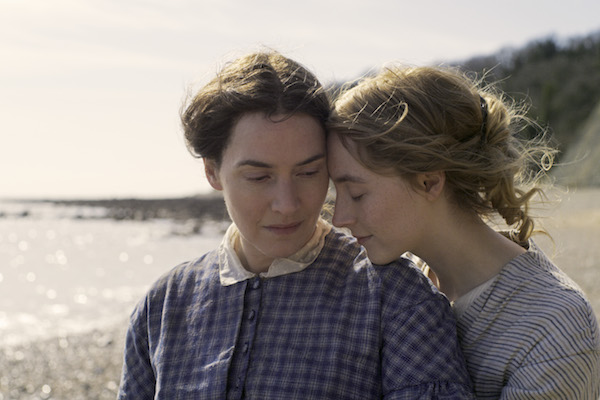In the last few years, there has been a rise in lesbian period dramas, such as Carol, The Favourite, and Portrait of a Lady on Fire. The latest film in this seemingly niche yet well-respected genre is Ammonite, a 19th century romantic drama starring Kate Winslet and Saoirse Ronan. Though Ammonite did not meet all of my expectations, it still deserves a place in the canon.
Ammonite is loosely based on the real lives of paleontologist Mary Anning (Kate Winslet) and Charlotte Murchison (Saoirse Ronan). The film was initially met with criticism since there is no evidence that Anning and Murchison were romantically involved. However, I really respect writer and director Francis Lee for his queer reimagination. As Lee rightly questioned on Twitter, “After seeing queer history be routinely ‘straightened’ throughout culture, and given a historical figure where there is no evidence whatsoever of a heterosexual relationship, is it not permissible to view that person within another context?”
Even with this controversy and larger debates about whether straight actors should play LGBTQ roles, Ammonite’s world premiere garnered mostly positive reviews. The film has also accumulated Oscar buzz for both Winslet and Ronan. Winslet won an Oscar in 2009 for The Reader and Ronan has been nominated for Best Actress three times in the last five years. And that buzz is absolutely well-deserved. From the steamy sex scenes that Winslet and Ronan choreographed themselves to the sensual glances they share in the second half of the film, they certainly deserve the high praise.
Where the film lags is the pacing of its romantic storyline. While the first 45 minutes was beautiful to watch, not much happens between the two female characters. And that’s to be expected with this genre, as it was in Carol and Portrait of a Lady on Fire. But in my view, what makes those two films better than Ammonite is the early romantic and sexual tension between the two leads. For example, when Therese and Carol first meet in Carol, there’s an instant curiosity and a bit of infatuation. The same is true in Portrait of a Lady on Fire. But with Anning and Murchison’s first few interactions in Ammonite, the spark is missing. Even when Murchison first kisses Anning, it feels sudden; their interaction lacks an unmistakable sense of longing and building chemistry.
The climax of Ammonite is the film’s second sex scene, which is one of the most raw and intimate portrayals of lesbian sex I have ever seen. But as incredible as it was to watch, it can’t make up for other aspects of the movie that were missing.
While the sound of waves crashing and fossils being scratched were certainly atmospheric, I wanted a more present musical score to underlie the passion of the two women. In addition, I wish Lee had developed Murchison’s back story as he did with Anning so their emotional connection was more believable.
But even with these critiques, Ammonite certainly shined through with its portrayal of the nuances of a same-sex relationship. While it certainly wasn’t quite Portrait of a Lady on Fire, Ammonite did have some real fire to it.

